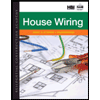Commuters choose auto or bus for their trips. The utility function for each travel mode was calibrated as follows: where V=C-0.10* X₁ -0.13* X₂-0.12 X3-0.0045 X4 + V observable utilities; C = constant; X₁ = waiting time (min); X₂ = travel time (min); X3 = parking time (min); X₁ = out-of-pocket cost (cents). The values of the parameters in the above utility function for each mode are shown below. Mode C X₁ (min) X₂ (min) X3 (min) Auto 20 Bus 35 Mode Light rail -0.33 -0.27 C 0 10 5 0 (a) Calculate the mode splits of auto and bus using the multinomial logit model. (b) In the part (a), the new light rail will be added as the third mode of travel. The utility function for light rail is the same as above and the values of the parameters for light rail are shown below. X4 (cents) 225 100 X₁ (min) X₂ (min) X3 (min) 15 25 0 0 X4 (cents) 150 Predict the mode splits of auto, bus and light rail using the multinomial logit model. (c) Does the result in (b) make intuitive sense? Comment on the result based on the independent of irrelevant alternatives (IIA) property of the multinomial logit model and suggest how to overcome the limitations of the IIA property in this mode choice problem.
Commuters choose auto or bus for their trips. The utility function for each travel mode was calibrated as follows: where V=C-0.10* X₁ -0.13* X₂-0.12 X3-0.0045 X4 + V observable utilities; C = constant; X₁ = waiting time (min); X₂ = travel time (min); X3 = parking time (min); X₁ = out-of-pocket cost (cents). The values of the parameters in the above utility function for each mode are shown below. Mode C X₁ (min) X₂ (min) X3 (min) Auto 20 Bus 35 Mode Light rail -0.33 -0.27 C 0 10 5 0 (a) Calculate the mode splits of auto and bus using the multinomial logit model. (b) In the part (a), the new light rail will be added as the third mode of travel. The utility function for light rail is the same as above and the values of the parameters for light rail are shown below. X4 (cents) 225 100 X₁ (min) X₂ (min) X3 (min) 15 25 0 0 X4 (cents) 150 Predict the mode splits of auto, bus and light rail using the multinomial logit model. (c) Does the result in (b) make intuitive sense? Comment on the result based on the independent of irrelevant alternatives (IIA) property of the multinomial logit model and suggest how to overcome the limitations of the IIA property in this mode choice problem.
Residential Construction Academy: House Wiring (MindTap Course List)
4th Edition
ISBN:9781285852225
Author:Gregory W Fletcher
Publisher:Gregory W Fletcher
Chapter1: Residential Workplace Safety
Section: Chapter Questions
Problem 20RQ
Related questions
Question

Transcribed Image Text:Commuters choose auto or bus for their trips. The utility function for each travel mode was
calibrated as follows:
where
V=C-0.10* X₁ -0.13* X₂-0.12 X3-0.0045 X4
*
V = observable utilities;
C = constant;
X₁ = waiting time (min);
X₂ = travel time (min);
X3 = parking time (min);
X₁ = out-of-pocket cost (cents).
The values of the parameters in the above utility function for each mode are shown below.
C
X₁ (min) X₂ (min) X3 (min) X4 (cents)
225
100
Mode
Auto
Bus
Mode
Light rail
-0.33
-0.27
с
0
10
(a) Calculate the mode splits of auto and bus using the multinomial logit model.
(b) In the part (a), the new light rail will be added as the third mode of travel. The utility
function for light rail is the same as above and the values of the parameters for light rail are
shown below.
0
20
35
5
0
X₁ (min) X₂ (min)
15
25
X3 (min) X4 (cents)
0
150
Predict the mode splits of auto, bus and light rail using the multinomial logit model.
(c) Does the result in (b) make intuitive sense? Comment on the result based on the independent
of irrelevant alternatives (IIA) property of the multinomial logit model and suggest how to
overcome the limitations of the IIA property in this mode choice problem.
Expert Solution
This question has been solved!
Explore an expertly crafted, step-by-step solution for a thorough understanding of key concepts.
Step 1: Mention the given data.
VIEWStep 2: (a) Determine the utility function of auto and bus.
VIEWStep 3: Determine the mode splits of auto and bus.
VIEWStep 4: (b) Determine the mode split of light rail.
VIEWStep 5: Determine the mode split of auto and bus after rail.
VIEWStep 6: (c) Explanation regarding the values.
VIEWSolution
VIEWStep by step
Solved in 7 steps with 16 images

Knowledge Booster
Learn more about
Need a deep-dive on the concept behind this application? Look no further. Learn more about this topic, civil-engineering and related others by exploring similar questions and additional content below.Recommended textbooks for you

Residential Construction Academy: House Wiring (M…
Civil Engineering
ISBN:
9781285852225
Author:
Gregory W Fletcher
Publisher:
Cengage Learning

Engineering Fundamentals: An Introduction to Engi…
Civil Engineering
ISBN:
9781305084766
Author:
Saeed Moaveni
Publisher:
Cengage Learning

Residential Construction Academy: House Wiring (M…
Civil Engineering
ISBN:
9781285852225
Author:
Gregory W Fletcher
Publisher:
Cengage Learning

Engineering Fundamentals: An Introduction to Engi…
Civil Engineering
ISBN:
9781305084766
Author:
Saeed Moaveni
Publisher:
Cengage Learning